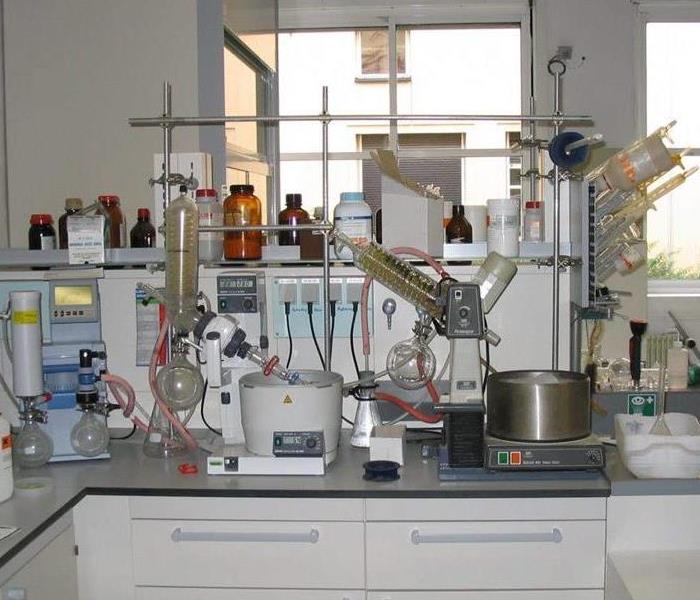Drug Lab Cleaning & Restoration - A sad truth.... Do you know how to rectify it?
1/23/2020 (Permalink)
How to Clean Meth in 9 Steps:
1. Surveying the Area
Inspecting the property and the surrounding area is arguably one of the most important steps. It gives the cleaning crew an idea of the level of contamination and sets the course of the entire cleaning process. When surveying the area, our technicians are equipped with the latest personal protective equipment, as any exposure to toxic substances can be hazardous. This includes special protective glasses, gloves, steel toe boots, and protective suits.
2. Ventilating the Building
Allowing clean and fresh air to enter the contaminated building is crucial. Using blowers and negative air scrubber machines is also necessary to completely replace the air inside. If there is a functional HVAC system in the building, it should be shut down to avoid spreading toxic particles into the air.
3. Developing a Cleanup Plan
After assessing the property, conducting tests, and performing the initial decontamination phase, it’s time to define the scope of work and develop a plan. This comprehensive plan should cover a variety of scenarios and outline what kind of cleanup methods are required in order to restore the property successfully.
The plan should cover things like:
- The levels of contamination in each room of the building.
- What kind of protective equipment is necessary
- What type of cleaning machines are required
- Security concerns and structural integrity
- Cleaning and waste disposal methods
- Cost estimates
A well-laid-out plan can streamline the cleaning process, making it less time-intensive and more cost-effective.
4. Removing Contaminated Objects
Once a plan is in place, we can commence the cleaning process by removing every affected object, including all carpets. Some of the items will be discarded entirely as they are too contaminated to be cleaned. After removing everything affected, we will once again ventilate the area for at least 24 hours.
5. Vacuuming the floors
We use commercial-grade vacuums equipped with special HEPA filters that are ideal for all floor types as well as above-ground areas such as walls. Vacuuming walls will remove any particles and is necessary before washing them.
6. First Stage of Washing
Once we’re done with vacuuming the area, it’s time to commence the first stage of washing hard surfaces. We make sure to reach all the nooks and crannies, especially those that are not visible at first. Using our previous experience and comprehensive test kits, we make sure the entire property is thoroughly washed. We do not use bleach as it can react with the toxic chemicals associated with Meth, producing a toxic gas as a result. Instead, we opt for detergent water solutions.
7. Addressing the HVAC System
The HVAC system needs to be completely shut down prior to and during the remediation process. It also needs to be thoroughly tested using special test kits in order to determine the level of meth residue found in the system, as well as the spread of contamination. Disinfecting air ducts is a challenging task that can compromise the remediation process at any time. Luckily, SERVPRO of Reno Southwest’s professional technicians have the necessary equipment and experience to handle this daunting task.
8. Second Stage of Washing
The second stage of washing involves using an effective cleaning agent that does not react with common chemicals used in the production of Methamphetamine. We clean from top to bottom, meaning we start from the ceilings and finish with the floors to prevent spreading contamination onto the lower sections. Each wash is followed by a thorough rinse using clean water. Exhaust vents, lighting fixtures, and hard surfaces such as counters and shelves are cleaned several times.
9. Clearance testing
After the job is completed, we will make sure to determine if the clearance levels are satisfactory and that they meet the standard set by state and local laws. If the re-occupancy clearance levels are not met, the site should be cleaned once more. Encapsulating the walls and the ceiling with primers is also advisable in this case.
If you’re dealing with a property that’s been deemed an ex-drug lab, call SERVPRO of Reno Southwst today.





 24/7 Emergency Service
24/7 Emergency Service